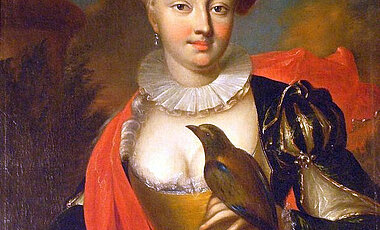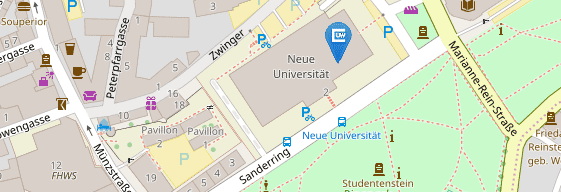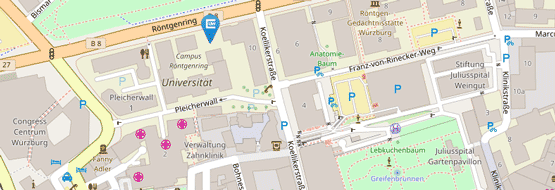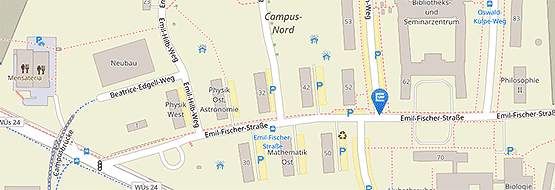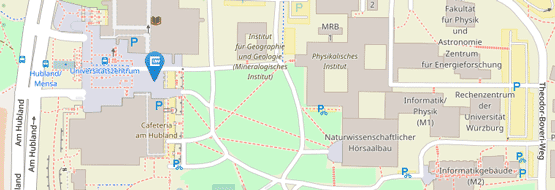Maria Aurora von Königsmarck: “The Most Celebrated Woman of Two Centuries”
11/25/2025A hybrid edition of Aurora von Königsmarck’s works is being produced in Eichstätt, Würzburg and Darmstadt. As a poet, musician and organiser of courtly festivities, she was a key figure of galanterie in the German-speaking world.

Courtesy, learning, elegance, grace – and, of course, flirtation: all of this belonged to the highly fashionable galanterie around 1700. Its ideal of conduct came from France, more precisely from literary salons such as that of Mademoiselle de Scudéry, where women and men met one another as equals in free and open exchange.
In the German-speaking world, the prevailing prejudice held that galanterie had arrived only in a diminished, masculine form. University professors and their students – among them Christian Thomasius, August Bohse and Christian Friedrich Hunold – lectured on the subject and wrote galant novels and manuals on the art of letter-writing.
Yet one female protagonist, above all, refutes this prejudice in the most striking way: the German-Swedish countess Maria Aurora von Königsmarck (1662–1728). In the German-speaking world she is regarded as the unrivalled and much-admired model of a galant lady.
A research team led by Professor Stephan Kraft at Julius-Maximilians-Universität Würzburg (JMU), Professor Isabelle Stauffer at the Catholic University of Eichstätt-Ingolstadt, and Professor Thomas Stäcker at the University and State Library Darmstadt now aims to assemble and make accessible the countess’s literary oeuvre and selected correspondence.
A Substantial Oeuvre and Far-Reaching Connections
Born into one of the most powerful families of the Swedish high nobility, Maria Aurora von Königsmarck became the mistress of the Saxon Elector Augustus the Strong, with whom she had a son. Maurice of Saxony went on to enjoy a distinguished career, eventually becoming Marshal of France under Louis XV. She herself later became provost of the Imperial Abbey for Noble Ladies at Quedlinburg.
As the organiser and focal point of courtly and galant festivities, as well as a musician and actress, she was – as Voltaire put it – “the most celebrated woman of two centuries”. She was also a galant poet of the highest rank, writing secular and religious poetry, dramas, autobiographical prose texts and literary galant letters in German, French, Italian, Swedish and Latin.
Her correspondents ranged from the high nobility to the foremost intellectuals of her age, among them King Charles XII of Sweden, King Frederick William I of Prussia, Duke Anton Ulrich of Brunswick-Wolfenbüttel, Gottfried Wilhelm Leibniz and August Hermann Francke.
Anyone unfamiliar with this may nonetheless have heard of the so-called Königsmarck Affair. It cost her brother Philipp Christoph his life in 1694. He had fallen – illicitly – in love with the Hanoverian Electoral Princess Sophie Dorothea and became the victim of hired assassins. His body was never found. This European-wide scandal also marked a turning point in the life of his sister: in her search for answers surrounding her brother’s sudden disappearance, Maria Aurora met Augustus the Strong – and entirely new paths opened up for her.
A Scattered Oeuvre, Barely Accessible Today
Today, her richly varied literary output – so closely bound to the world of galanterie – is barely accessible. Like most noblewomen of her time, she hardly ever published under her own name. Her manuscripts are scattered across Germany and Sweden.
No modern collection issued under her name contains more than roughly a quarter of the surviving material – and even that only in fairly arbitrary selection.
This situation has prompted the researchers to make Aurora von Königsmarck’s literary works, together with a selection of her correspondence, available in a coherent edition for the first time.
The annotated edition is funded by the German Research Foundation (DFG). It will appear both as a printed volume with Olms Verlag and online at the Centre for Digital Editions in Darmstadt (ZEiD), which will also host digital copies of the manuscripts and prints. Because galant texts are closely embedded in communicative contexts, the edition is organised according to the geographical and chronological focal points of Aurora von Königsmarck’s life: Sweden; the Welf duchies; Dresden; Hamburg; and, finally, Quedlinburg. In addition to detailed commentary on individual passages, each of these stations in her life and work is introduced with its own dedicated essay.
Further Information on the Project
DFG-Projekte Aurora von Königsmarck
An introduction to Aurora von Königsmarck and her works by Stephan Kraft (accessible via the University Library Würzburg)
Contact
Prof. Dr. Stephan Kraft, Institut für deutsche Philologie, Universität Würzburg, Email: stephan.kraft@uni-wuerzburg.de


